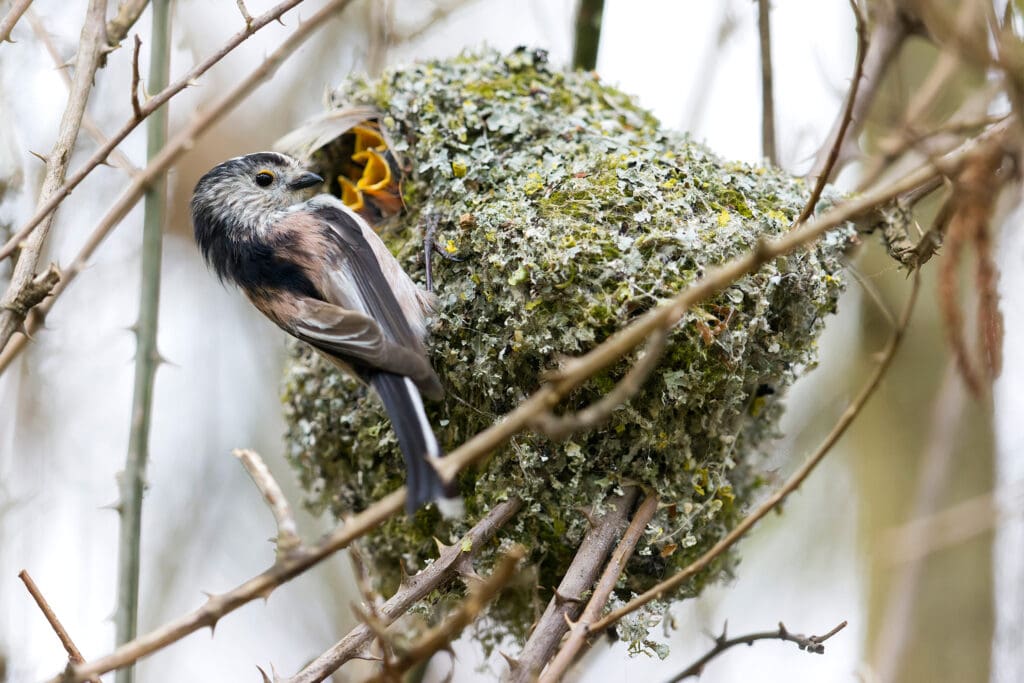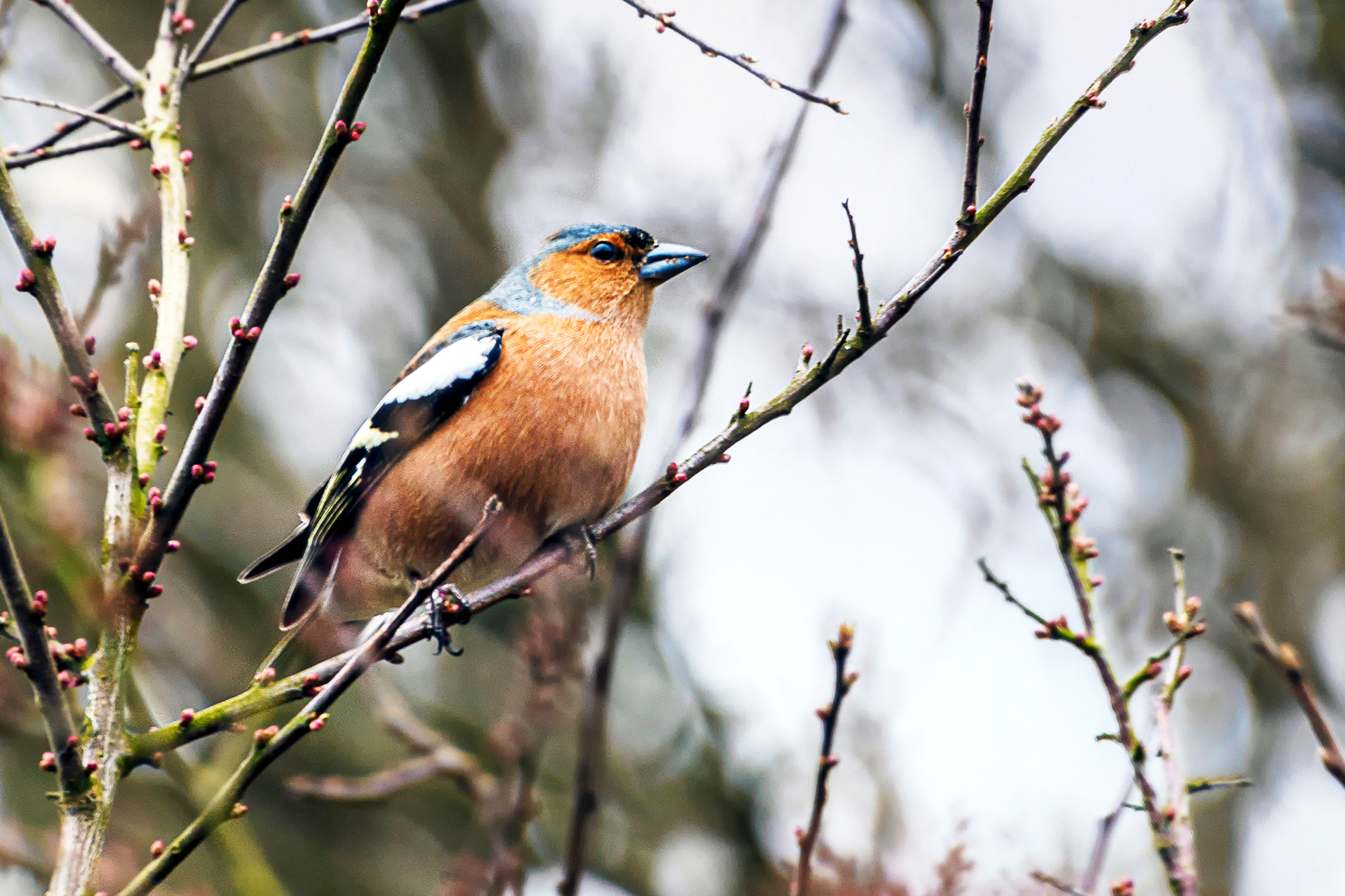I have seen sick finches in my garden, could it be trichomonosis?
Akash Alexander
Trichomonosis is a parasitic disease which leads to lesions in the gullet of affected birds. Signs of the disease include lethargy, fluffed-up feathers, difficulty swallowing and regurgitated food around the beak. A new study is trying to understand the ways in which the disease spreads and how we can reduce transmission risk. You can help by reporting any sightings of sick or dead birds to our partners at Garden Wildlife Health. If you find five or more dead birds of any wild species in the same location, report this to the government. You can also help reduce the risk of disease with weekly cleaning of feeding stations and bird baths.
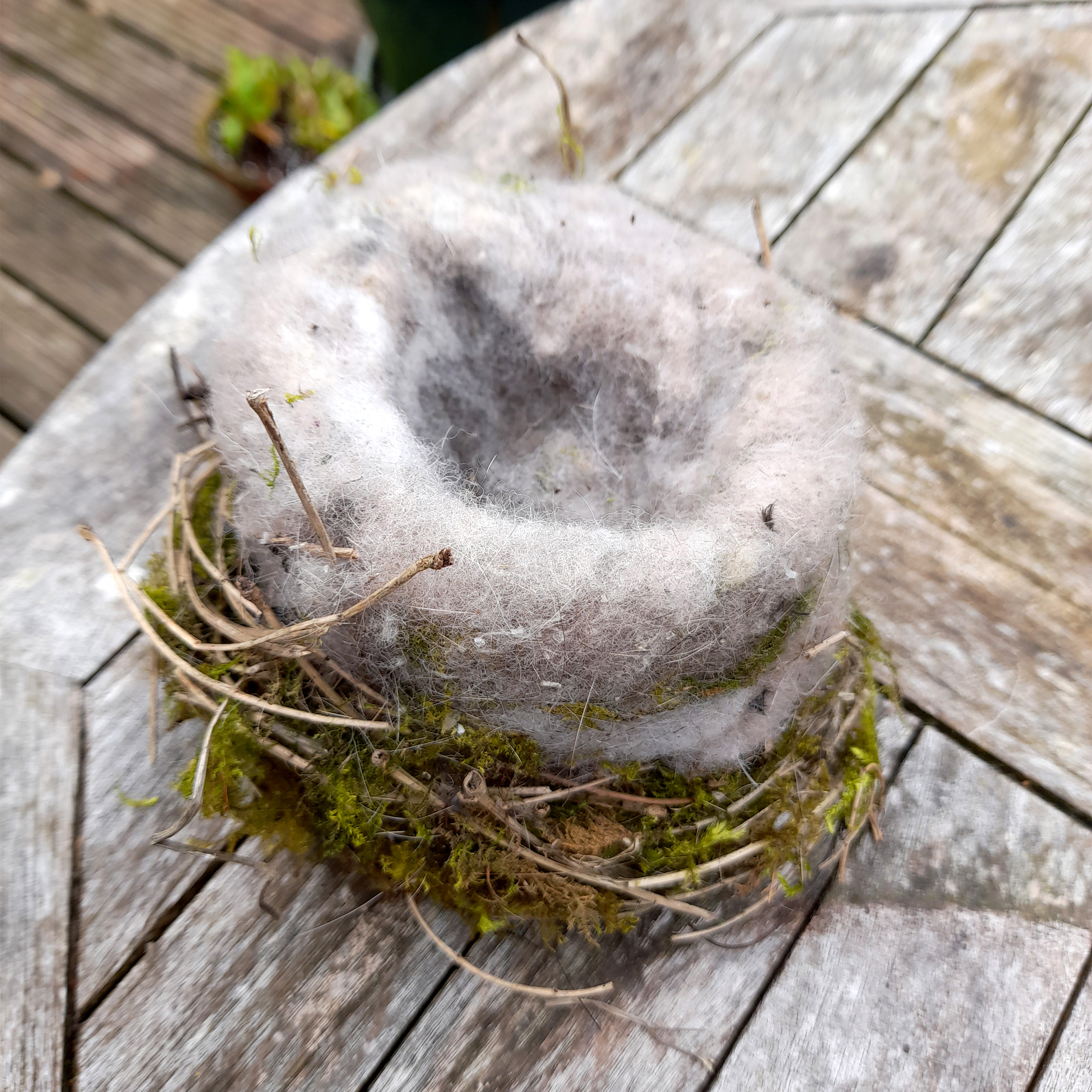
Great Tit nest. Photo: Denise Grant
Who does this nest belong to?
Denise Grant
This cosy-looking nest was discovered in an outdoor pizza oven! It’s a fantastic example of a Great Tit nest, which tend to be found in cavities such as a hole within a tree, wall or nestboxes. Great Tits create wonderful nest cups made up of roots, moss, lichens and grass which they mix wool, down and even spider-webs into. They then line the inside with materials such as hair and feathers to keep their eggs warm. An important reminder to check your pizza oven before lighting!
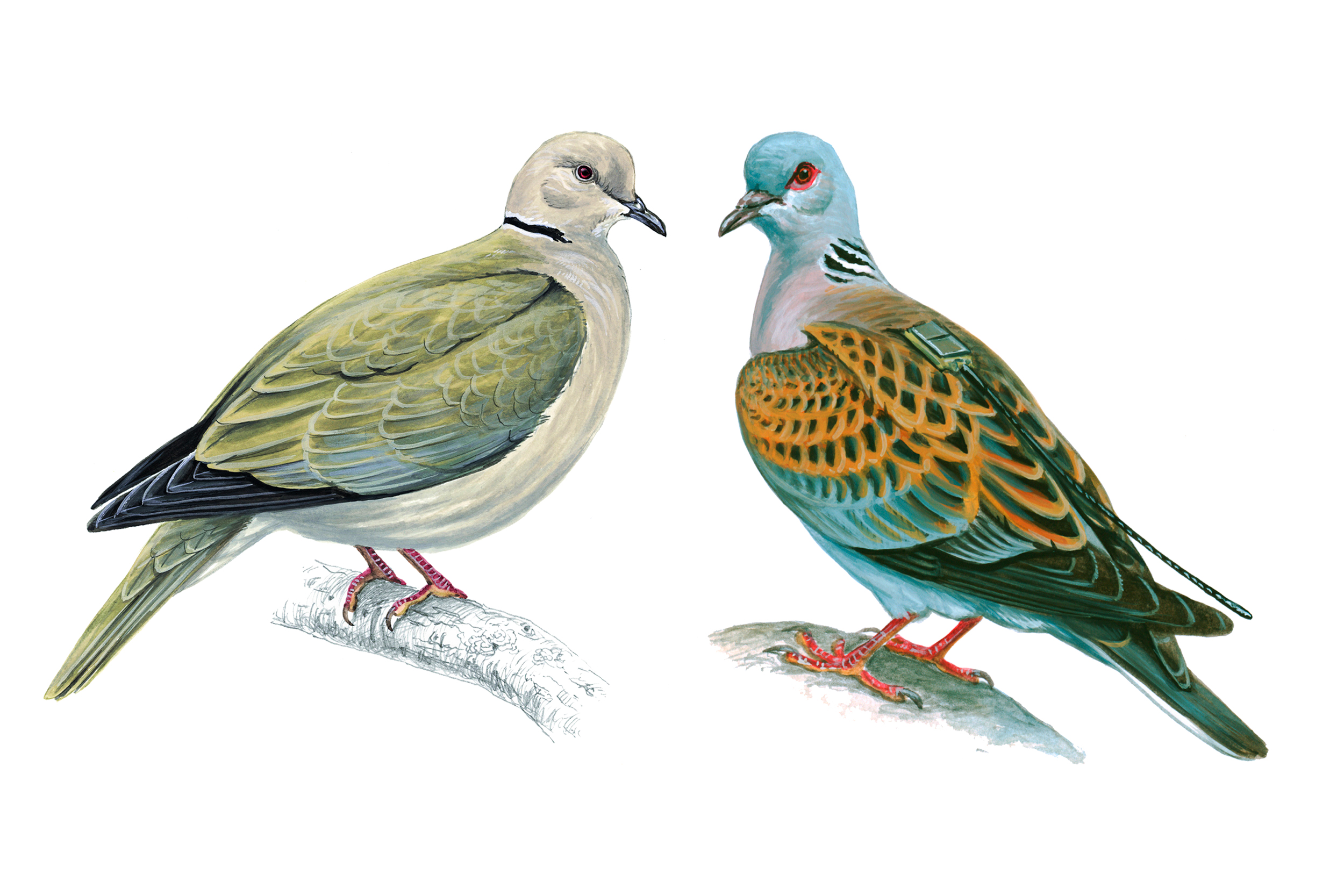
Collared Dove (left) and Turtle Dove (right). Images not to scale. Illustrations: Mike Langman (rspb-images.com)
Turtle Dove or Collared Dove?
We are lucky enough to have Turtle Doves visit us over the spring and summer to breed, however, they can easily be confused with our year-round resident, the Collared Dove, which can be spotted across the British Isles. With its distinctive ‘coo’ and bold markings, the Green-listed Collared Dove is a familiar species to us all; the Red-listed Turtle Dove, however, has sadly become a rarer sight in the UK.
Collared Dove
- Long-winged and pale buff-grey in colour
- Black half-collar ring on the back of the neck
- Upper parts of tail have no strong contrasting colours
- White undersides of wings and buff-coloured lower belly
Turtle Dove
- Smaller in size than the Collared Dove
- Barred neck patch
- Upperparts are distinctively mottled with chestnut and black
- Neck and chest are pink/grey in colour
- In flight you can see their dark tail has a contrasting, broad white band
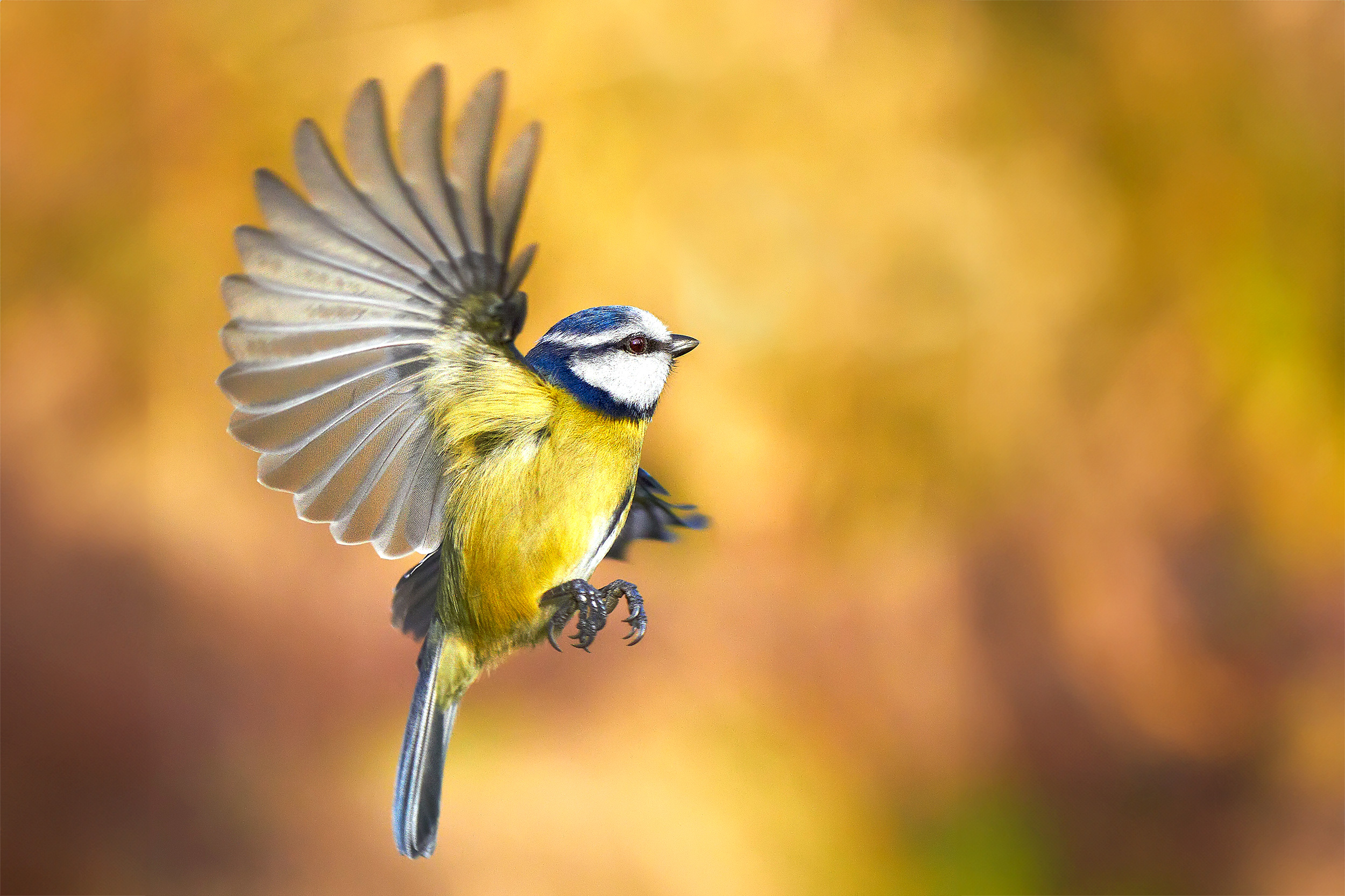
Blue Tit. Photo: J N Photography (Getty Images)
Have you ever wondered about the structure of bird bones?
Hannah Dewhurst
Most birds are masters of flight, which is possible through their bone structure. The wing skeleton is particularly lightweight due to hollow (pneumatic) bones that are filled with air. Interestingly, there are broad differences in bone structure, even between similar species. For example, diving ducks have thick, marrow-filled bones to counteract buoyancy in water, whereas dabbling ducks have almost entirely air-filled bones since they rarely submerge themselves. Birds are also the only vertebrates with a fused collarbone – along with the fusion of other bones, this reduces their mass to aid in flight.
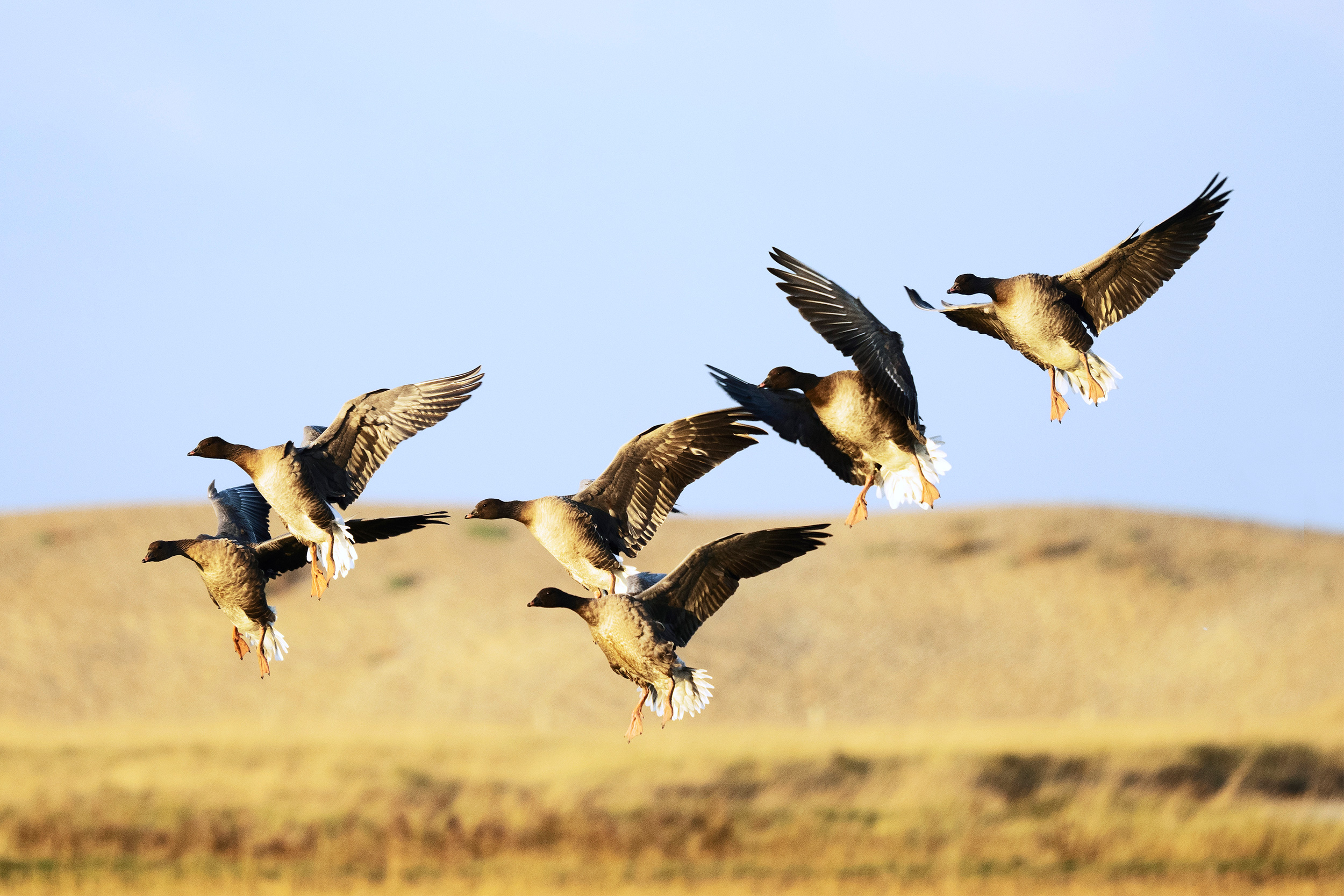
Pink-footed Geese. Photo: David Tipling (rspb-images.com)
How do birds navigate during migration?
Tom Blades
Environmental cues play the greatest role; along with temperature changes, day length triggers migration as birds are sensitive to the hours of daylight. Birds use landmarks as guidance, following rivers or mountain ranges. Birds also use the position of the sun and even the Earth’s magnetic field for direction – some species have a mineral (magnetite) embedded in their skulls that picks up on magnetic forces. Many flock together, with young birds following adults to learn the route. It’s incredible to think about the journeys many of our birds take!
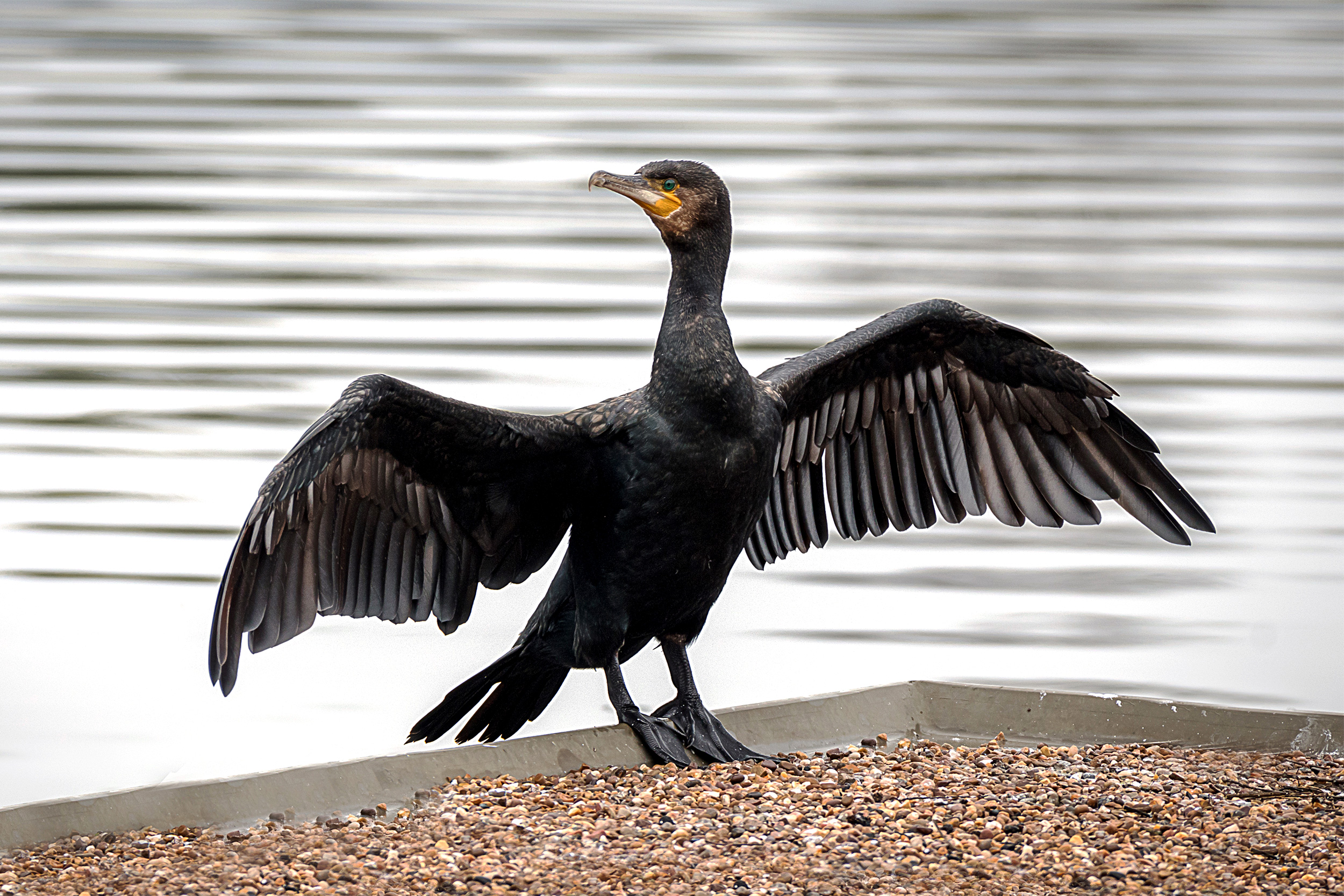
Cormorant. Photo: Alan Tunnicliffe Photography (Getty Images)
Why do Cormorants spread their wings so often?
Ellie Peters
Cormorants are frequently seen perching, staying still for a long time with their wings spread open in the sun. This behaviour is usually (although not always) observed after swimming or diving. There are a few different theories as to why Cormorants assume this posture (including warming ingested fish and advertising their success in finding food to others), but it is mainly believed that Cormorants do this to dry off their feathers. Cormorants primarily feed on fish and dive to catch their prey. However, their plumage is not completely waterproof so it’s important that they find a way of drying themselves off after.
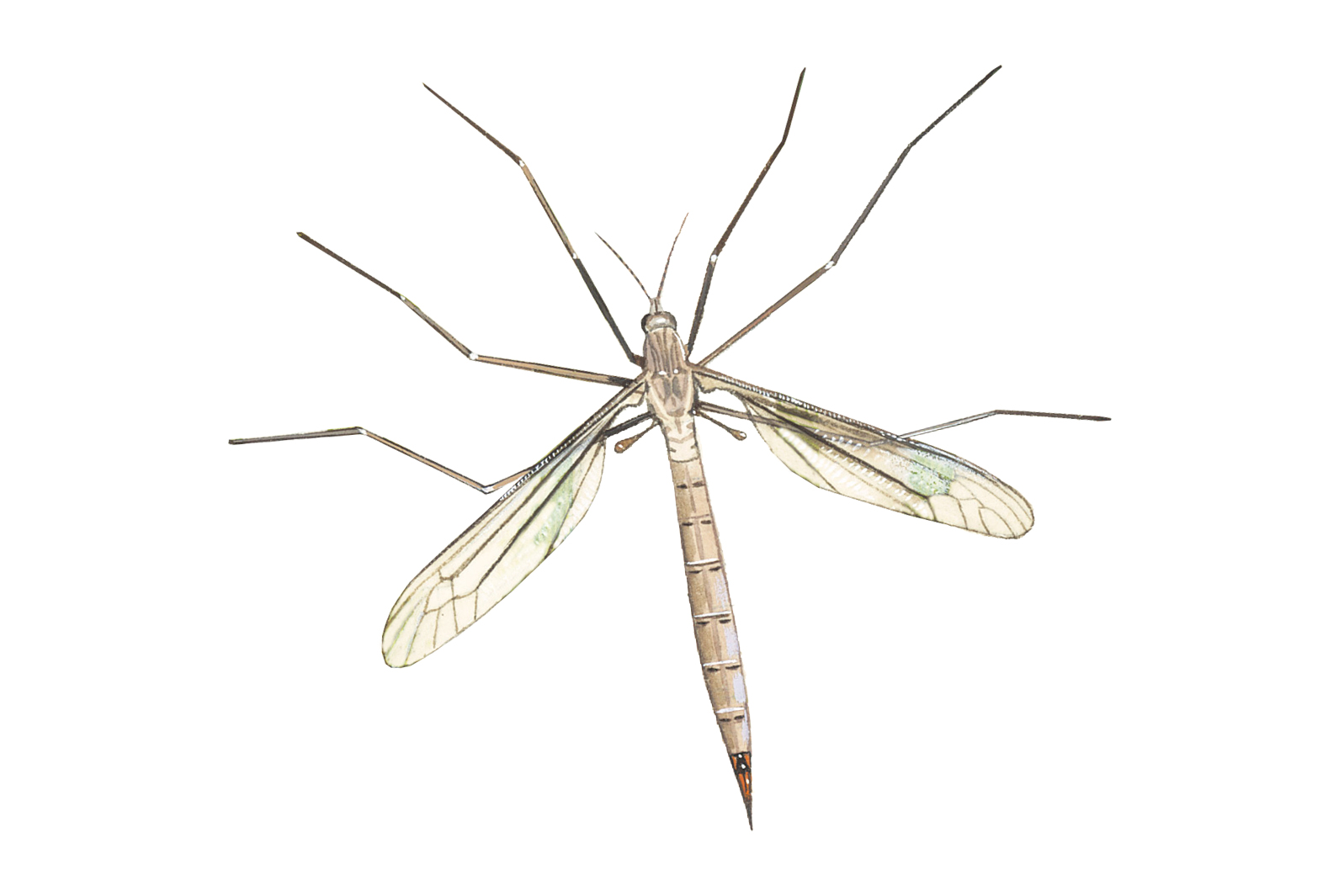
Cranefly. Illustration: Chris Shields (rspb-images.com)
What are leatherjackets?
Matthew Kersley
Craneflies (above), or daddy long-legs as they are often known, are an important part of the food chain. The larvae of some of our most common cranefly species (such as Spotted Craneflies, often found in gardens) are known as ‘leatherjackets’. As well as many birds eating adult craneflies, the larvae are also an important food source for lots of species, including Starlings which are often seen probing for the leatherjackets in the ground. Short grass areas are great places for Starlings to find this nutritious food source.
How to…
Site a Nuthatch nest box
Nuthatches use natural tree holes for their nests – often choosing large, mature deciduous trees or making the most of old woodpecker holes – but they will also use nest boxes with a 32mm entrance hole. A Nuthatch nest box is best placed around two to three metres from the ground with a clear flight path to the entrance. Ideally the nest box should face between north and east, but it would also be fine to face it in a different direction as long as the area gets plenty of shade during the day. You’ll likely know if you get Nuthatches move in to your nest box by the mud that they plaster around the entrance hole! They typically lay between six and eight eggs which hatch around two weeks later.
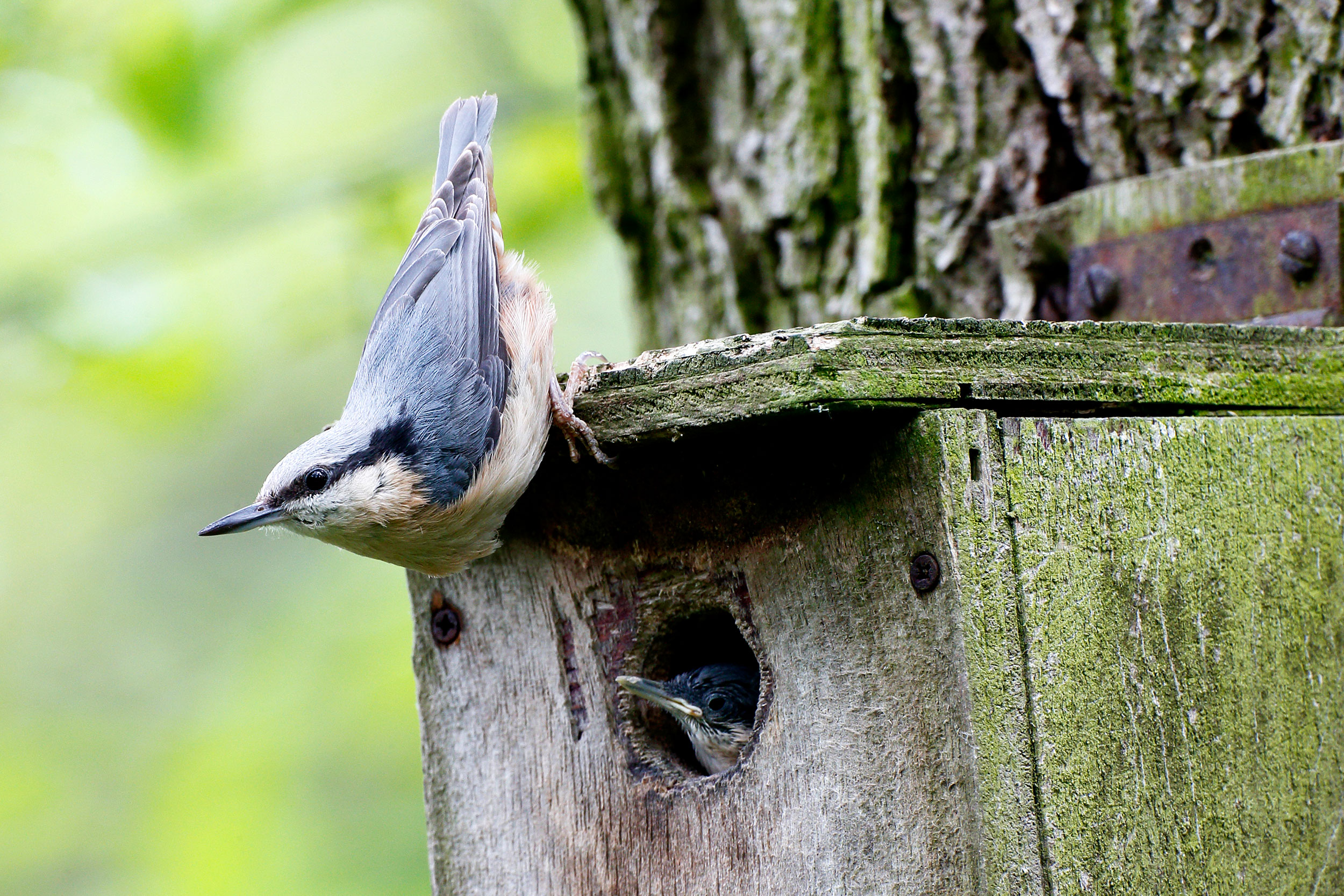
Nuthatch on nest box. Photo: Mike Lane (rspb-images.com)
You might also like

Shop for migrating birds
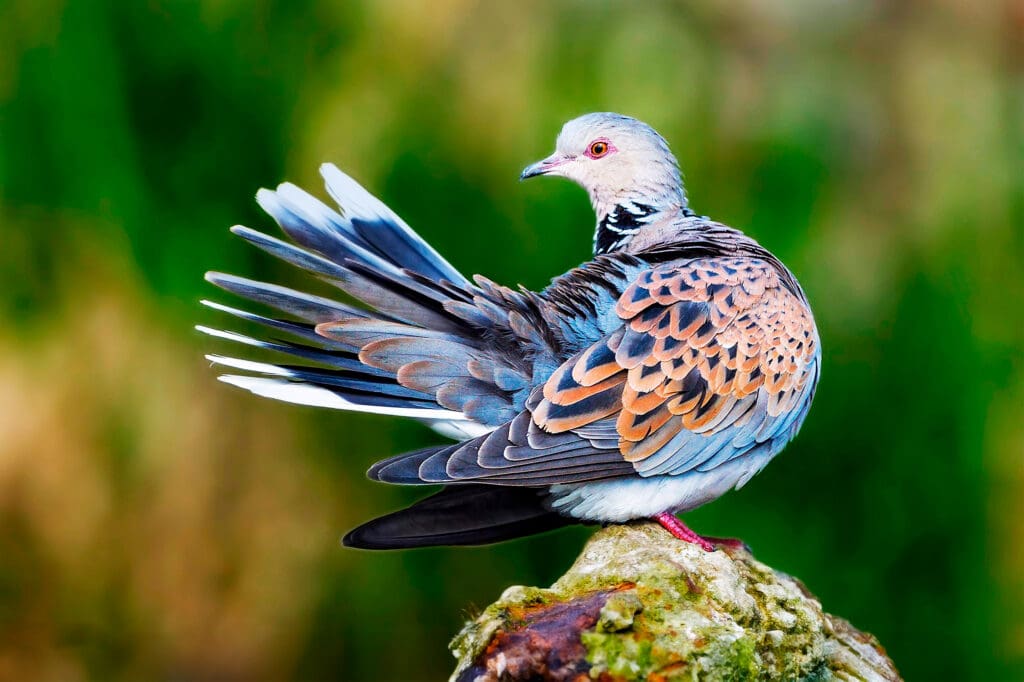
Operation Turtle Dove
